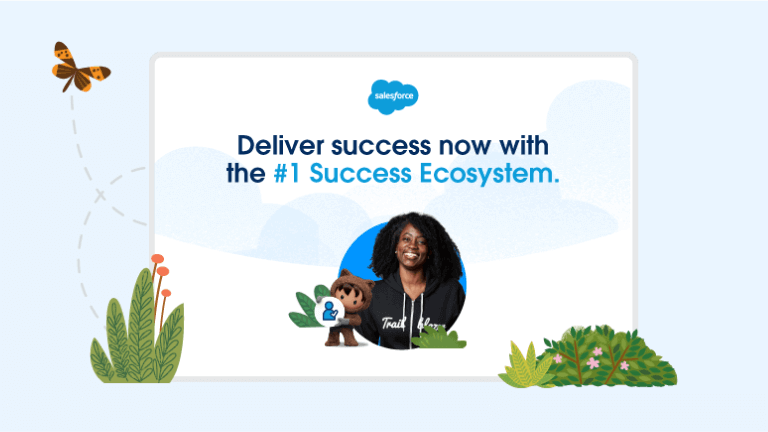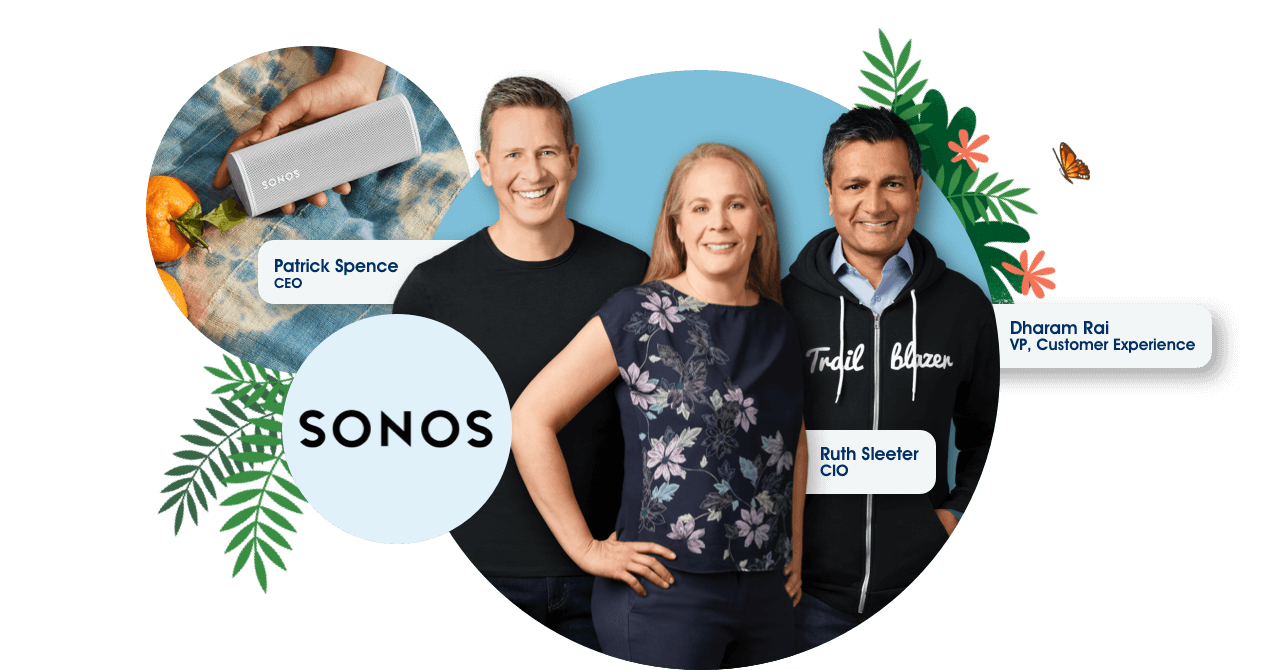From 6 systems to 1: How Cruise drives efficiency and boosts productivity.
Learn how Salesforce experts helped the driverless rideshare company transform in four months.
“We are an innovative company trying to disrupt transportation,” said Radha Penekelapati, Cruise’s Vice President of Customer Success. “It’s important that we understand what our customers want and what they are happy and unhappy about, and implement changes based on that.”
But how do you provide the personalized experiences customers expect when there is no driver? How do you manage the everyday interactions a passenger might normally have with a rideshare service? And how do you provide proactive customer experience that both anticipates customers’ needs and prevents issues from arising?
To deliver the superior and personalized experience its customers deserved, the startup recognized that it first needed to give its service agents a unified 360-degree view of customers. The company also needed to consolidate multiple fragmented systems, which hampered the ability to resolve customers’ problems easily and with empathy. At the same time, largely manual processes made it difficult for team members to provide consistently high-quality service. With most of the company’s technical resources focused on perfecting its autonomous vehicle technology, Cruise needed a scalable solution and strategic partner it could rely on.

Working with Salesforce has allowed the company to build the strong foundation needed for a more scalable service delivery model as it looks to launch its rideshare service across other cities.
“We have audacious goals,” said Penekelapati. “We’re hoping to expand to thousands of cars and hit $1 billion in revenue in 2025. We need to prepare for that ‘hockey stick’ of growth with a solution that will enable us to scale.”
Here are five lessons from Cruise’s digital transformation that could help your organization accelerate time to value, reduce complexity for team members, boost real-time collaboration between teams, and drive cost savings.
Related Content

Customer Story
See how Humana uses data to bring patients back to the doctor.

Customer story
Three weeks’ work in one day: How Schneider Electric serves customers faster.

customer story
NBCUniversal becomes a tech-driven content company and earns new fans.
“Working with Salesforce Professional Services has accelerated our ability to innovate, without us needing to invest a huge number of resources ourselves.”
Radha Penekelapati
1. Accelerate time to value with Salesforce Professional Services.
By working with the team of Salesforce experts, Cruise gained access to years of proven knowledge and experience delivering outcome-driven strategies. The team helped co-create a faster path to value for Cruise’s transformation, including designing use cases, deploying the solution, performing user acceptance testing, and optimization after go-live.
As product, industry, and implementation experts, Salesforce Professional Services provided architectural guidance throughout the implementation that not only met Cruise’s short-term needs, but also catered for the long-term evolution of the company’s Salesforce platform. This included implementing best practices to boost productivity across queue management and escalations, privacy and security, and useability. It was also given direct access to the latest innovations and product roadmaps to maximize the full power of its Salesforce investment.
“As a lean startup, we don’t have the resources to start a heavy enterprise IT project of this kind and do the entire design and implementation ourselves,” says Nathan Leddy, Cruise’s Strategy and Operations Manager. “Salesforce Professional Services was able to fill the gap and provide us with the expert guidance we needed.”
Collaborating with the team of Salesforce experts enabled the company to successfully design and implement a Service Cloud solution in just four months, keeping costs low and limiting the need for too many internal resources. The ability to launch a minimum viable product that delivered value so quickly gave the project a great deal of credibility with the company’s executive team and other internal stakeholders.
As Cruise continues to scale its business, Salesforce Professional Services’ ongoing expert guidance and best practices are helping Cruise to become self-sufficient by ensuring they have the expertise they need to thrive. Salesforce’s experts have also set Cruise up for long-term, efficient growth by upskilling Cruise’s own team members.
“We could not have done it without Salesforce Professional Services,” said Penekelapati.
2. Provide empathetic customer support with unified tools.
Using Service Cloud, Cruise has united six of its systems into one platform. This allows agents to take a straight path from issue to resolution, improving efficiency and giving them more time to build strong customer relationships. In addition, Cruise leverages its instance of Slack with Service Cloud to swarm customer service issues and streamline internal communication around vehicle and customer incidents.
The solution has also enabled Cruise to introduce guided workflows for complex service processes. For example, the company can now consolidate customer interactions (regardless of how they are received — for example, by email, text message, or phone call) into a single customer view, instead of treating each email or call about a customer as disparate records. This ensures customers deal with fully informed customer service agents, reducing customer frustration and saving time.
Having a 360-degree view of its customers has greatly improved the quality of Cruise’s service.
“This allows us to deliver much more informed and empathetic support when we’re interacting with our customers,” said Leddy.
Cruise has been able to use Service Cloud’s analytics capabilities to consolidate its customer and support data into a single system. This enables team members to access contact rate reporting 10 times faster than before. The platform also shares insights directly with the engineering team, which they can use to improve customer experiences.
“The voice of the customer program is a big one,” he said. “We’re creating a feedback loop of customer issues driving back into product and engineering to get them fixed — but also looking at things like our contact rate and our contact drivers over time.”
Cruise drives digital transformation with the help of Salesforce experts.
3. Allow anytime collaboration with channel-based messaging.
With speed of utmost importance to the company’s Service Cloud implementation, Cruise used Slack Connect to collaborate seamlessly in real time with Salesforce Professional Services’ experts. Slack’s secure channel-based messaging meant Cruise’s project team was able to reach out to Salesforce whenever it needed to.
“Having the Salesforce Professional Services team available on Slack was really helpful,” said Leddy. “We could reach them at any time to jump into a huddle, ask questions, and align key design decisions.”
The company now uses Slack as a Digital HQ for its employees, allowing team members to stay connected to the company from wherever they happen to be working. This includes having dedicated channels for communicating company news, weekly and monthly metrics, and customer insights.
Employees can also access a variety of Employee Resource Group channels, such as the company’s Empowering Women of Cruise channel and social channels where team members can build connections with their peers.
4. Keep costs low with the right partners and tools.
“We know it will impact our KPIs,” he said. “And it impacts the cost of operations because we can train our employees faster and move through cases faster. But it is only now that we have Service Cloud that we can measure some of these things for the first time.”
The company is already starting to see positive results that help reduce costs and increase productivity. A report that used to take up to two days to generate manually is now done automatically in a matter of seconds. Leddy also credits a 15% cost reduction to confidence around metrics, increased productivity, and efficiency driven by Service Cloud.
Greater visibility over data and the ability to generate valuable customer insights also enables Cruise to identify opportunities to reduce ongoing operating expenses.
5. Maintain momentum with a roadmap for digital change.
To strategize how technology can enable its vision of creating delightful customer experiences, the company partnered with Salesforce experts and rolled out Knowledge Base to drive quick case resolution with recommended articles and optimized article search. This tool enables agents to quickly find the information they need to help customers whenever and wherever they are.
As Cruise scales, it will continue to look for additional opportunities to partner with Salesforce to drive growth and safely connect people to the places, things, and experiences they care about with the world’s most advanced self-driving vehicles.
“If the people who built the tool are telling you exactly how to use it for your specific use case, you can be confident you’re going to end up with a great solution.”
Nathan Leddy
More Resources

Guide
Learn how to maximize your Salesforce success.

Research
Discover the ROI and business benefits of Salesforce Professional Services.

Services and Plans
Deliver success now with Salesforce Professional Services.



